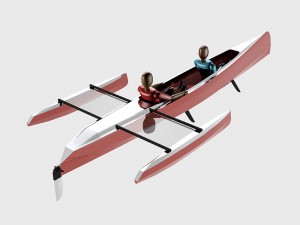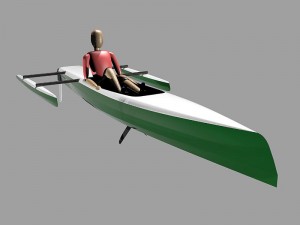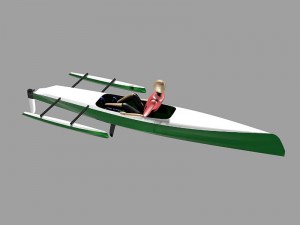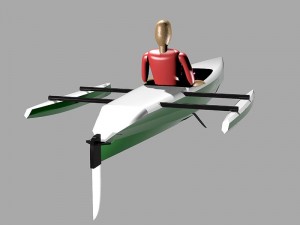18’ compact double sea kayak
Some time back, Fred Gasper, from Haslett, Michigan, and I exchanged a few emails about a boat project he wanted to undertake. He was looking to build a double sea kayak so that he and his wife, Kathy, could enjoy paddling activities together. Fred indicated that he had already built several plywood kayaks and was just about finished with his second stripper canoe, so I knew he would not need an extensive guide through the basics of building a larger boat for he and his gal.
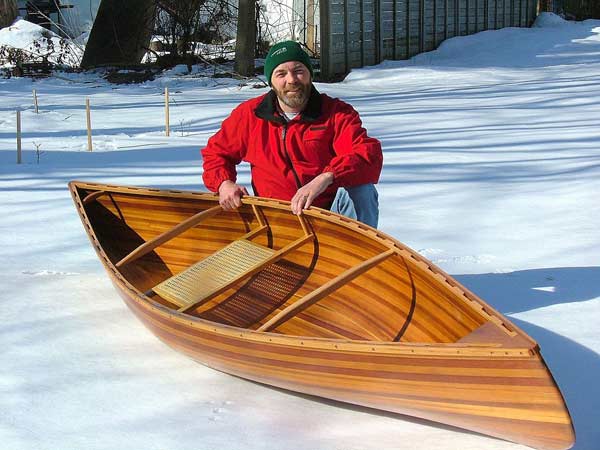
You can see in the accompanying photo that Fred has pretty well mastered the art of fine woodworking when it comes to building boats. As a new designer with several boats of my own out in the world, I was looking to get connected to another builder who had the talent and the experience to produce a terrific finished boat. Clearly, after taking a look at some of Fred’s prior projects, I was excited to be combining efforts with his capability.
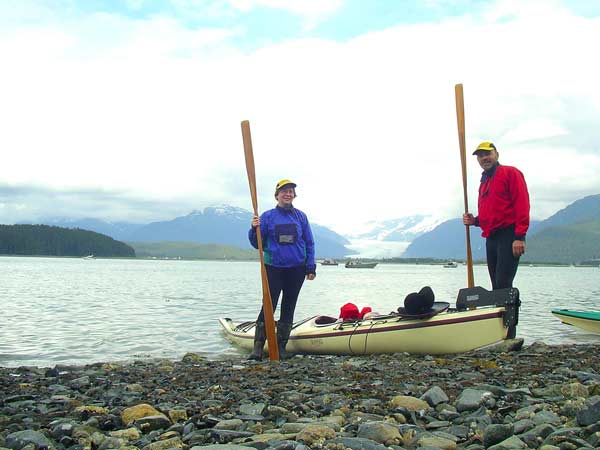
Fred and Kathy have quite a bit of experience when it comes to taking kayak oriented journeys. They’ve made a few trips to the Pacific Northwest to do just that. They both have a well-developed understanding of what a boat is supposed to do when paddled.
I developed the Lunada Bay design to fill a special niche in the double touring kayak market. The design brief addressed such things as being car-toppable, easily stored in the average garage or basement, able to carry two adults for day paddling and the odd overnighter, highly responsive to turning input and able to track effortlessly. The boat did not need to be able to carry a week’s worth of gear and food or produce a high, sustained speed under paddle, as it was to be a comfortable cruiser for more leisurely outings.

The result was an asymmetric hull design of 18’ LOA with a beam of 28” to be built in a hybrid construction method. Hybrid build style is basically the combination of a marine plywood, multichine hull with a cedar strip built deck. This type of boat takes advantage of the two build styles to offer quick hull construction combined with the natural wood beauty of a stripped deck. It also allows the soft sweeping contours of a stripper on the part of the boat that is most often seen by the paddlers.

In this style, the builder first assembles the hull panels, fillets the hull seams and glass laminates the hull inside and out. He then inserts a series of building stations for the stripped deck process and begins to create the patterns as desired with various colors and species of wood to suit his taste. The hull, itself, provides the strongback form for the stations and soon, the deck is complete and ready to join to the hull with the bulkheads in place.

The cockpit openings are laid-out on the deck surface taking care to measure the Center of Buoyancy of the design to balance the paddling positions in the boat. Once cut out, the cockpits are finished with the construction of the rims and flanges for the paddling sprayskirts. There are probably five recognized methods for cockpit rim fabrication. All of them work and it more or less comes down to how you want the whole thing to look. Something like choosing plaid instead of print for a shirt pattern.
Just last week, Fred and Kathy took their new boat out for a spin on the local lake to see how she’d perform. Fred had been working on the boat, off and on, since mid February. He managed to squeeze-in a trip to the Grand Canyon with Kathy, family obligations, the normal household chores, as well as his regular job, all at the same time. He was more than ready to get the boat on the water. The coming change in the weather probably played an additional role in the urge to go paddling.
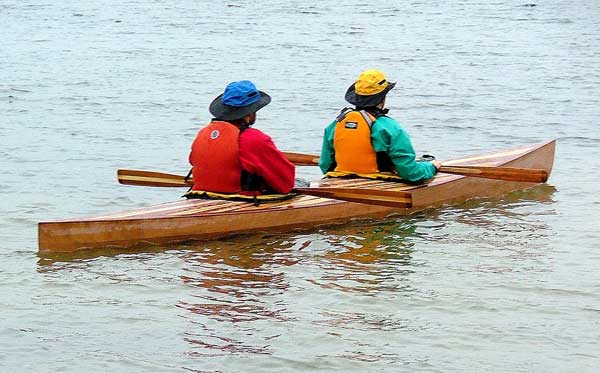
I’m pleased to share with you that the boat performed like a star, ticking off the big elements in the design brief while being put through her paces by Fred and Kathy on an overcast, October day in Michigan. Fred just sent me an email and said, “Tracked and turned great with no weathercocking. Don’t think she will need a rudder. We named her “Travelin’ Louise”
This kind of report is pure music to a designer’s ears. I jumped-up from Fred’s email and took my wife and son out to dinner to celebrate. Everything was great, except my wife wouldn’t let me eat the greasy, garlic mushroom burger I really wanted to order. Seems that even though I can design some really nice, trim boats, I have a long way to go to get my own hull form back to my former nice lines.
Fred and Kathy will need to install the backbands, footbraces, carry straps, seats, deck accessories and then finish off Louise with several coats of beautiful, satin varnish before they put her away for the winter. Fred indicates that the finished boat will tip the scales at just over 60 pounds. I’m really looking forward to the reports from their future adventures in “Louise” over the coming years.
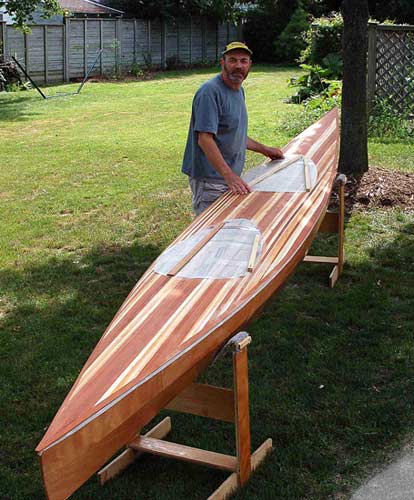
As an aside, the name Lunada Bay comes from a local surf and snorkeling location from my youth along the beaches of L.A’s South Bay. Where I come from, Lunada is a Spanish word that loosely translates to a moon lit party on the beach. I have spent many warm summer evenings with friends, cooking freshly caught lobsters and abalone on the beach while a full moon lit the sea. I couldn’t think of a better way to use this boat.
Chris Ostlind
Lunada Design
Chris@Wedgesail.com
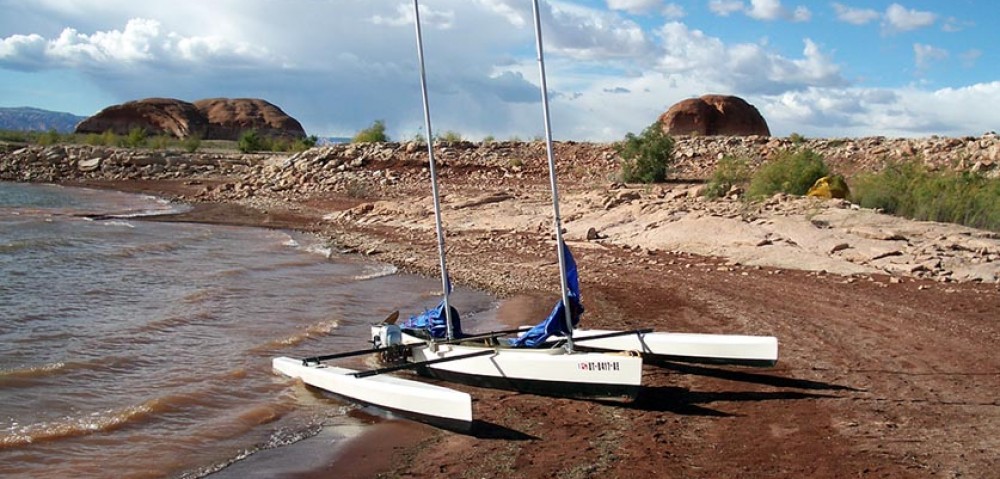
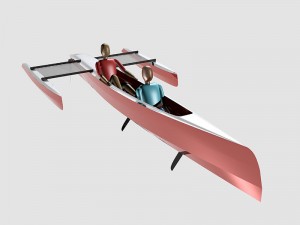
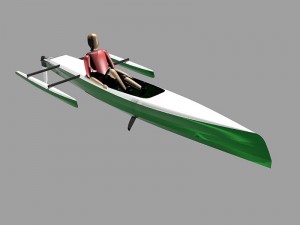 being a double Mirage setup and the 17relying on a single Mirage.
being a double Mirage setup and the 17relying on a single Mirage.